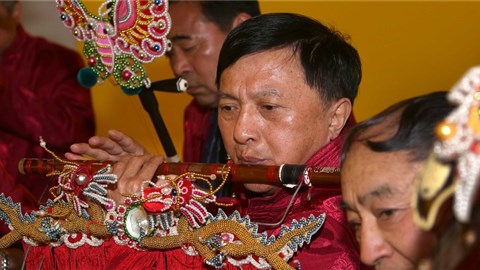A new era for innovation in the Yangtze River Delta
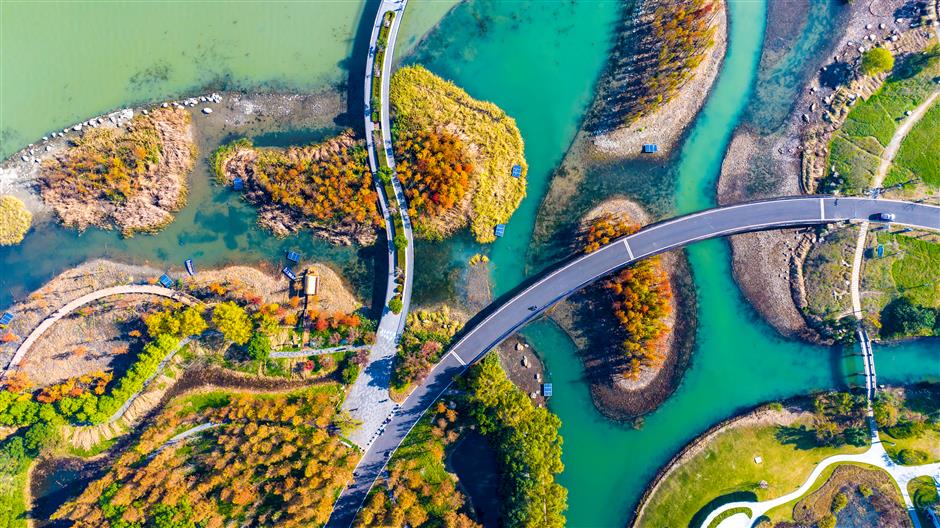
The picturesque landscape of Yuandang Lake in Wujiang District, Suzhou, is within the Yangtze River Delta Ecological Green Integration Development Demonstration Zone.
For senior researchers like Wang Zheng, setting up a lab is no longer limited to Shanghai. The integrated development of the Yangtze River Delta has expanded opportunities across the region, making it easier to access resources, collaborate with global companies and apply academic research.
Wang now focuses on future healthcare and wellness at the Xiangfudang Innovation Center in Jiaxing of neighboring Zhejiang Province, a short distance from Zhejiang University, where she completed her postdoctoral studies in 2022.
Established in 2019, the center has already signed more than 26 corporate partnerships, creating a bridge between research labs and commercial applications.
Its location – just an hour by high-speed rail from Shanghai – enables researchers like Wang to stay connected with global markets while benefiting from a more affordable and livable environment.
Wang's experience illustrates the profound impact of the region's integration initiative, which spans Shanghai, Jiangsu, Zhejiang and Anhui provinces. It's a shift backed by robust planning and detailed research.
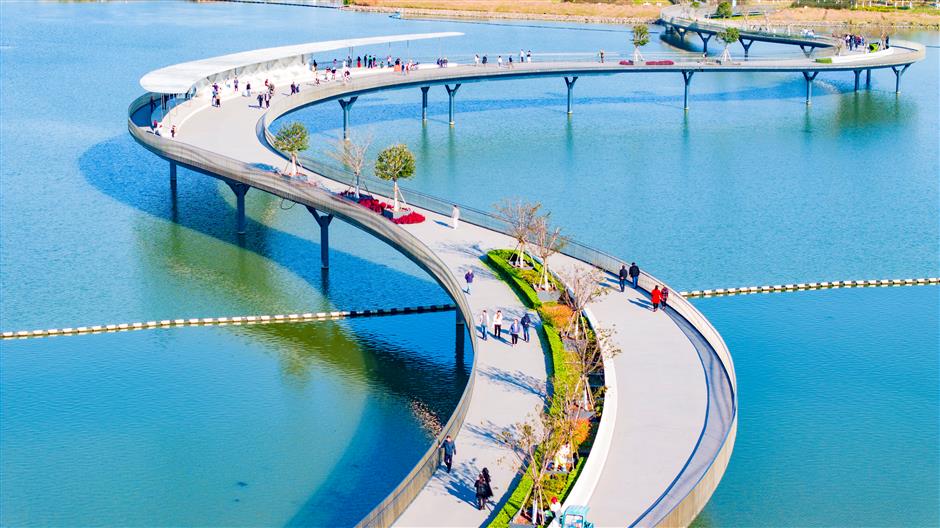
Yuandang Lake
Zeng Gang, director of the East China Normal University Institute of Urban Development, has been studying the strategy's success through the annual Yangtze River Economic Belt Coordination Index.
It ranks cities based on their collaboration and competitiveness.
"The region is no longer just a cluster of cities competing with each other," Zeng said. "It's evolving into a unified regional ecosystem, where talent and resources can flow seamlessly."
The institute released its 2024 index and report last week. The report, authored by a team led by Zeng, underscores the increasing collaborative capabilities of 110 cities in the region.
For the 10th year in a row, Shanghai ranked first, reaffirming its leadership role. Other cities, like Hangzhou and Nanjing, maintained strong positions in the top tier, while newcomers such as Nantong climbed rapidly due to enhanced external communication services.
The index highlighted a blend of traditional strengths and emerging opportunities, Zeng said. It evaluated cities across four domains: technological innovation, economic development, communication services, and ecological support.
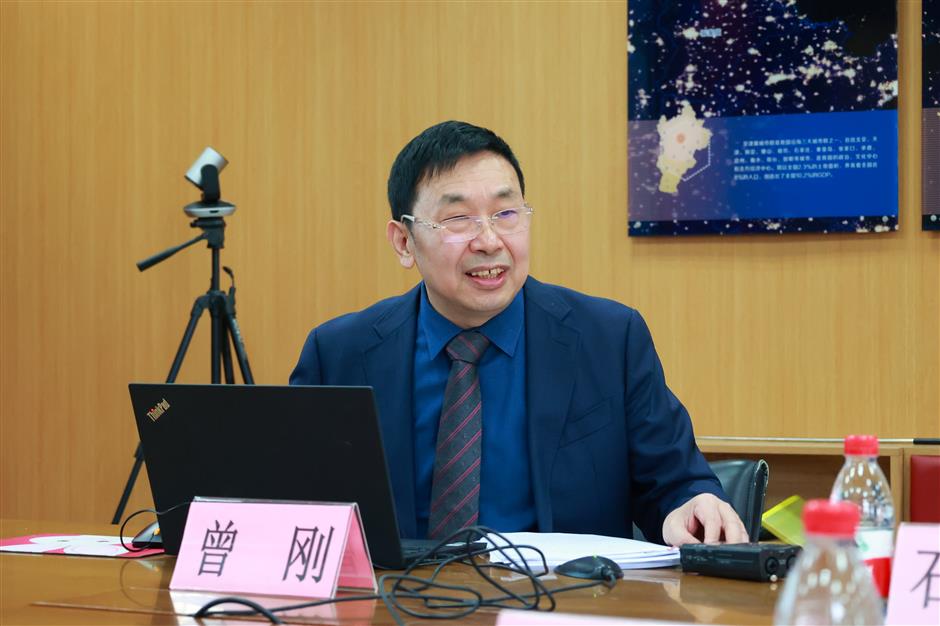
Zeng Gang, director of East China Normal University's Institute of Urban Development
This year's report introduces metrics on digital economy core enterprises, reflecting their growing role as engines of regional synergy.
The integration of digital transformation is critical, as seen in cities like Wuhu and Changde, which improved their rankings through robust performances in the digital economy sector.
Zeng emphasized the region's evolving structure, comparing it to an olive shape with Shanghai at the peak, surrounded by highly developed regional hubs like Suzhou and Chengdu.
Yet challenges remain. While economic and technological indicators show strong correlations, ecological support lags behind.
Average scores in the area trail far below those of other domains, highlighting an ongoing struggle to balance development with environmental sustainability.
Efforts to address these gaps include promoting inter-city innovation networks. Zeng advocates creating cross-regional innovation communities to bridge disparities and bolster high-quality growth.
His team suggests strategies such as expanding cross-border collaboration under the Belt and Road Initiative and establishing international partnerships to amplify the region's global competitiveness.
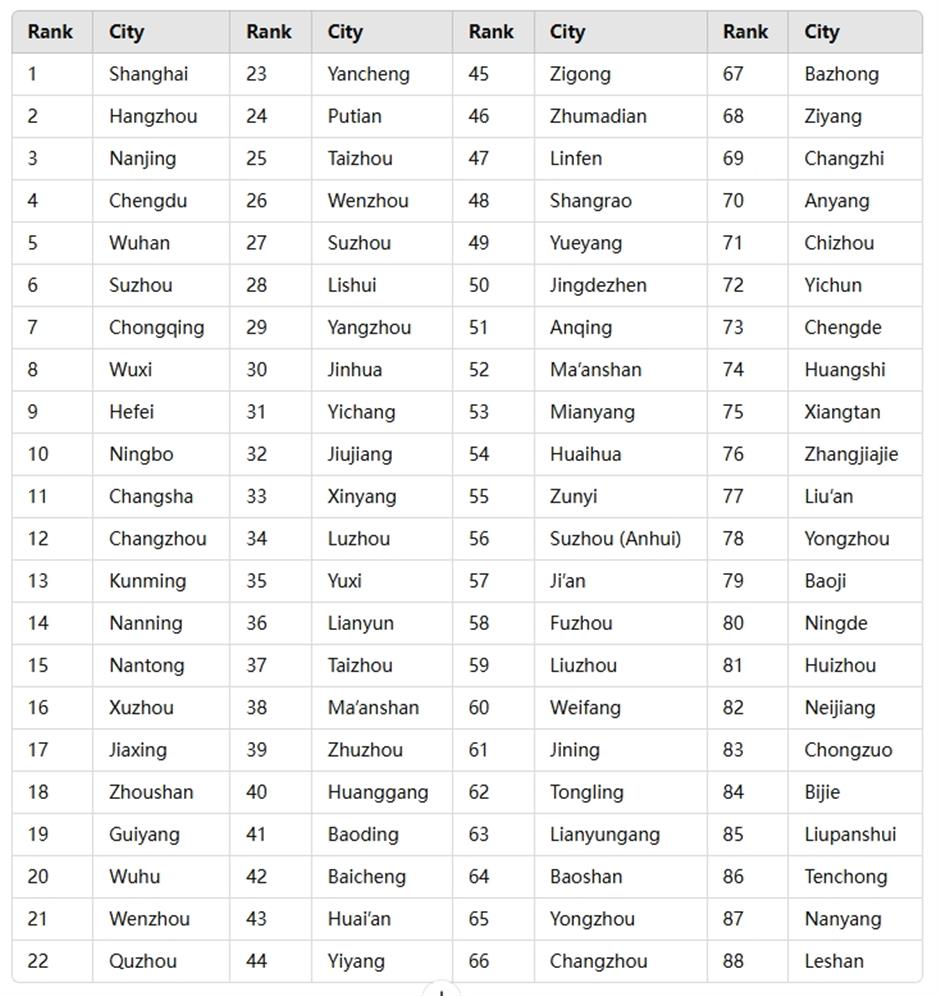
This ranking shows cities along the Yangtze River by economic and comprehensive strength.
Wang's experience exemplifies these goals in action. By integrating her expertise into local businesses, she fosters a culture of shared knowledge and innovation.
The Future Health Lab she works in is part of Zhejiang University's Delta Smart Oasis initiative and collaborates with firms across Shanghai, Ningbo and beyond.
The lab's automated Chinese medicine analysis platform accelerates product development, showcasing how technological innovation can translate into tangible benefits for regional industries.
The broader Yangtze River Delta, home to 240 million people, is a critical driver of China's economy. Its collaborative model depends on transportation, shared cultural events, and robust policy support.
Jiaxing's investment in talent pipelines, for instance, such as direct transport links and cultural exchanges, facilitates the dual goals of workforce mobility and community integration. It helps researchers like Wang work more effectively, creating a relationship between education, innovation and industry.
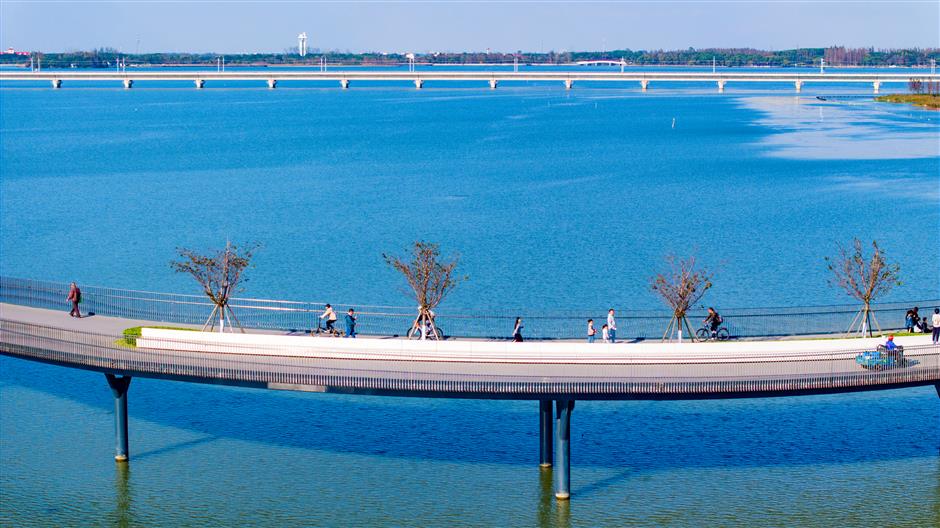
Residents and tourists cycle and stroll along Yuandang's slow-moving bridge.
Despite the progress, the report identified a major obstacle – stark disparities between coastal and inland cities.
While some areas excel in green initiatives, others struggle to catch up, impeding the overall ecological synergy. The uneven development underscores the need for targeted interventions to uplift lagging regions.
"Shanghai and other core cities need to play a leadership role by sharing opportunities and resources with less developed areas," Zeng said.
"The Yangtze River Delta isn't just an example for other parts of China. It's becoming a model for achieving balanced, sustainable, and high-quality growth on a global scale."





